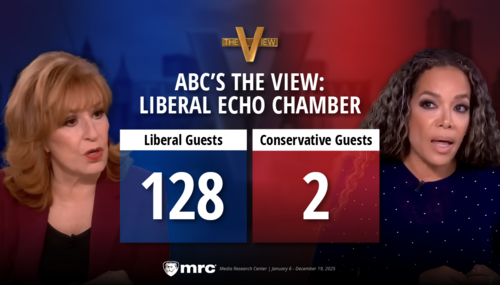Thursday's lead New York Times story by Patrick McGeehan on New York State raising the minimum wage for fast-food workers to a whopping $15 an hour by 2021 (2018 in New York City) was dominated almost completely by sources cheerleading for the wage hike.
That's despite the fact that even liberal economists are queasy about such a drastic hike in the minimum wage, and that the hike risks hurting the very low-income workers it supposedly helps, by raising the cost of their labor beyond a business's willingness or ability to pay, thus cutting off the bottom rungs of the economic ladder. And why stop at $15? There's no essential logic to the figure, beyond numerical neatness. If $15 an hour is good, wouldn't $150 an hour be even better?
The Times has made a hobby horse out of raising the minimum wage to $15, taking cues from recent big-city protests by fast-food workers and their union allies, even hitting Hillary Clinton from the left on the issue. But unlike that earlier article, which at least quoted liberal economist Jared Bernstein that the $15 level gave him qualms for being "out of sample," McGeehan loaded his lead story with supporters. He found not a single "liberal" among the wage-hike supporters and their labor allies, merely "advocates."
The labor protest movement that fast-food workers in New York City began nearly three years ago has led to higher wages for workers all across the country. On Wednesday, it paid off for the people who started it.
A panel appointed by Gov. Andrew M. Cuomo recommended on Wednesday that the minimum wage be raised for employees of fast-food chain restaurants throughout the state to $15 an hour over the next few years. Wages would be raised faster in New York City than in the rest of the state to account for the higher cost of living there.
The panel’s recommendations, which are expected to be put into effect by an order of the state’s acting commissioner of labor, represent a major triumph for the advocates who have rallied burger-flippers and fry cooks to demand pay that covers their basic needs. They argued that taxpayers were subsidizing the workforces of some multinational corporations, like McDonald’s, that were not paying enough to keep their workers from relying on food stamps and other welfare benefits.
....
The decision, announced in a conference room in Lower Manhattan, set off a raucous celebration by hundreds of workers and union leaders outside.
Flavia Cabral, 53, a grandmother from the Bronx who works part-time in a McDonald’s for $8.75 an hour, pointed out the scars where fry baskets had seared her forearms. “At least they listened to us,” she said, referring to the panel. “We’re breathing little by little.”
Bill Lipton, state director of the Working Families Party, called the decision a victory for the “99-percenters.” Mr. Lipton, who has campaigned for better pay for low-wage workers for years, said, “There’s clearly a new standard for the minimum wage, and it’s actually a living wage for the first time in many, many decades.”
....
The restaurant industry has chafed at these decisions. “We continue to say that we think it’s unfair that they singled out a single segment of our industry,” Melissa Fleischut, the executive director of the New York State Restaurant Association, said.
McGeehan saw only good for all workers, not job cuts or inflation danger.




